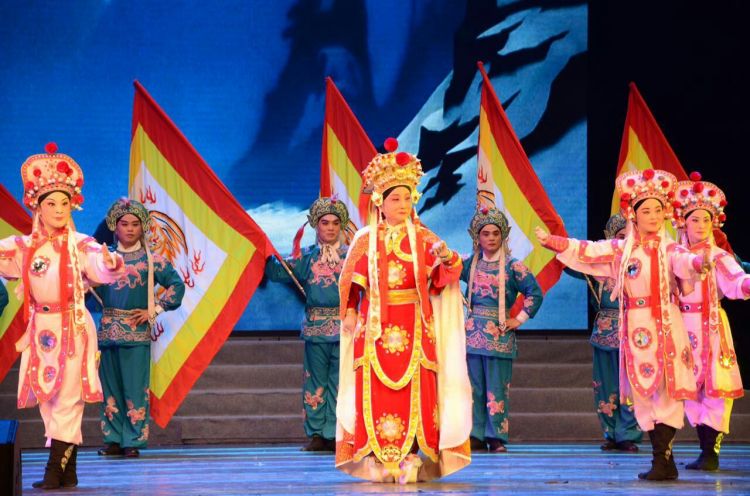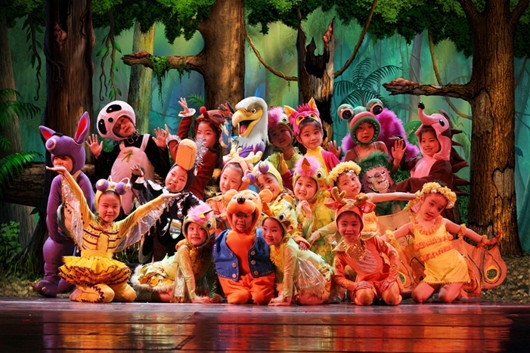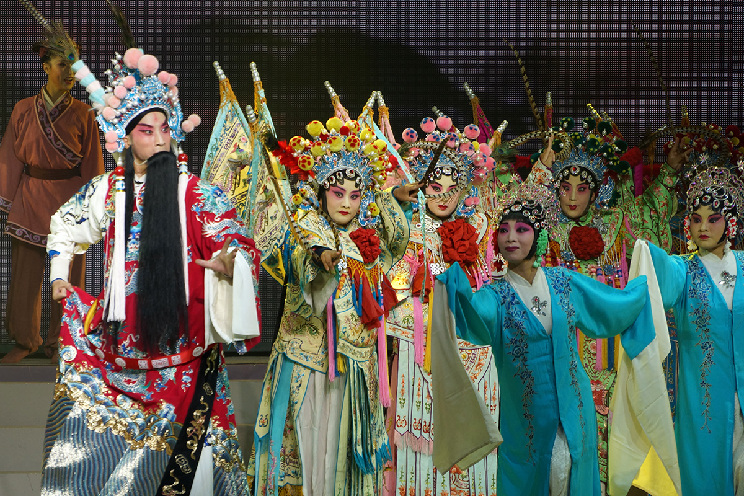Theatre Evolution
5 min readA Chinese saying goes:”One minute of performance on stage requires ten years ofpractice off stage.”The success of a play won’t be possible without perseveringpractice by actors,joint efforts of the team and a big enough performing place.
Theatre Evolution
As traditional opera develops,it’s performing venue has also gone through various changes.
In ancient times,when traditional opera was still a part of the sacrifice ritual,performances quite similar to the later traditional opera were oftenpresented on a open ground among mountain woods or on a field.For instance,Jiushao,a magnificent court dance organized by Xiaqi,the second king of the Xia dynasty,was performed on a field.In the Han dynasty,the then prevalent baixi(a term used in the Han dynasty to refer to various performances including acrobatics and song performances)were mainly performed in the hall of the noble’s residence,the yard in front of the hall or the terrace connecting to the main hall as the stage.Sometimes squares were used as well.For instance,during the reign of Emperor Wu in the Han dyansty,baixi performance was once staged in the square of Weiyang Palace.The first quasi-theatre for regular performance was present in temples,where the terrace with rails on all sides in front of the main hall became the stage,as evidenced by the portrayal of such temples in Dunhuang murals.As the performance became more and more secular,the stage was gradually moved out of Fixed performing venues didn’t emerge until the Song dynasty.There were two types:temples and commercial theatres in the marketplace.In the Tang and Song dynasties,all temples were constructed in the same layout:besides the gate,themain ha11,side halls and wing-rooms,a stage for the performance of traditionalopera became an important component.In the Song and Jin dynasties,those stagesfell into two categories:roofless”terrace stages”and roofed”pavilion stages’which were situated usually to the south of the main hall on a relatively highpedestal and visible to the audience from four directions.In the Yuan dynasty,wall was erected on one side of the performing pavilion so that audience could only watch from three directions:the front,the left and the right.

Though those stages were regularly used for performance,they were by no means the real theatres.The first commercial theatres in a real sense,which were called goulan,made their presence in washe(literally,a house roofed with tiles),a big entertainment place in the Song and Yuan dynasties..They were enclosed wooden round buildings,in which a stage and backstage was erected on one side and seats were constructed on the other three sides with one row higher than another.Zaju,a prevalent form of operatic performance in the Yuan dynasty was mostly staged in goulan.During the approximately four hundred years from the Northern Song to the early Ming dynasty,goulan and pavilion stages in temples served were the main performing venues.After the Ming dynasty,however,the former faded out while the latter still keep performing in today’s rural China.
After the Song and Yuan dynasties,there were two new performing venues emerged-tea houses and taverns where performers sang without accompaniment and makeup in the early years.Toward the end of Ming dynasty,a performing section was set up in taverns so that customers could ask a performing team to act while drinking wine.
Thus,in the early Qing dynasty,some taverns began to run both businesses:serving wines and providing performances;customers would pay the tavern and the performing troupe separately. At the time, tea houses used to have performances but later it declined for a while, until the reign of Emperor Qianlong when tea houses gradually replaced taverns as the venue for operatic performances. Usually a tea house theatre was an enclosed square or rectangular architecture which could be divided into two sections. The stage was set up in the front. There were three kinds of seats: the first was “official seats”which were segregated into boxes by screens on the second floor; the second was “scattered seats”usually put in the corridor under the second floor; the third was stalls in the middle. The first-class and the second-class seats were equipped with tables so that audience could drink tea while watching. The tea house theatre remained the most typical Chinese theatre before the European stage was introduced to China.

It’s mentioned that in the Han dynasty one of the performing venues for baixi was the hall in the noble’s residences. Such a performance was called “hall performance”, which endured over time and became the dominant form of performanceafter goulan faded out in the mid to late Ming dynasty. Usually a piece of carpet was placed in the center of floor as stage; tables and seats were set around thecarpet for both the host and the guests. Sometimes, performance was staged in theyard in front of the hall and thus was called “outside-hall performance”. Later, siheyuan, the typical residence in the Ming and Qing dynasties, provided more space for operatic performance since the hall opposite to the main hall could be transformed into an independent stage.
When the performance was put on for the royal family, it was a court performance. The stage for court performance was incomparably grand, learning fromboth the temple stage and the tea house stage structurally. Now, such court stages constructed in the Qing dynasty still stand in Forbidden City, Summer Palace and other imperial palaces for short stays. They generally fell into three types: ordinary stages, mini stages and three-floored stages. Quite similar to folk stages both in size and in architecture, the first type, such as the one in Shufang House within Chonghua Palace in Forbidden City and the Hall for Listening to Orioles in Summer Palace was mainly used on festivals. The second type was used by emperor and empress to enjoy themselves by watching plainly dressed plays and acrobatics in their daily life.

Two existing examples in Forbidden City are the indoor stage in Diligence Room within Palace of Tranquil Longevity and the one in Palace of Eternal Spring. The third kind was built for performance of plays written by court playwrights at important occasions, such as the celebration of the emperor’s birthday or the empress’ birthday. Changyinge, or Pavilion of Pleasant Sounds in Garden of TranquilLongevity in Forbidden City and Deheyuan, or Garden of Virtuous Harmony in Summer Palace are typical examples. With every floor having a way-in and way-out and three floors connecting to each other, the stage, so complex in structure, enabled simultaneous performance at multiple levels and thus could produce complex anddramatic scenes. The grand three-floored stage built in Qing dynasty’s imperial palaces undoubtedly represents the high point of the classical performing stage in China In the 20th century, the performance of traditional opera incorporated some western elements in that the European picture-frame-like stage featuring surrounding walls on three sides was built. Today, it has become the main stage in China’s big cities. In rural China, however, temple stages still prevail. Since a yabu or qunqu troupe wouldn’t perform on a temple stage, temple stages, which are seldom visited by the rich, are mainly for local plays, targeting ordinary people who either stand or have a seat on the ground while watching.








